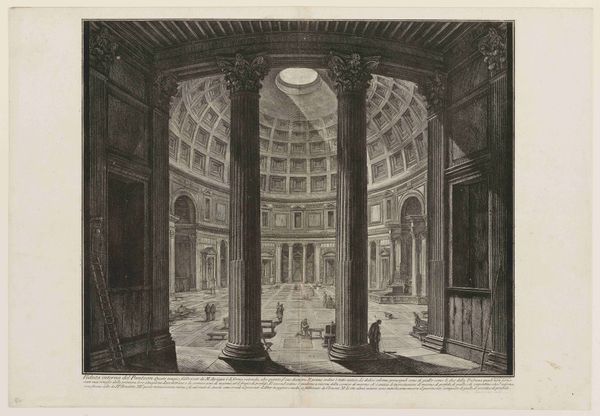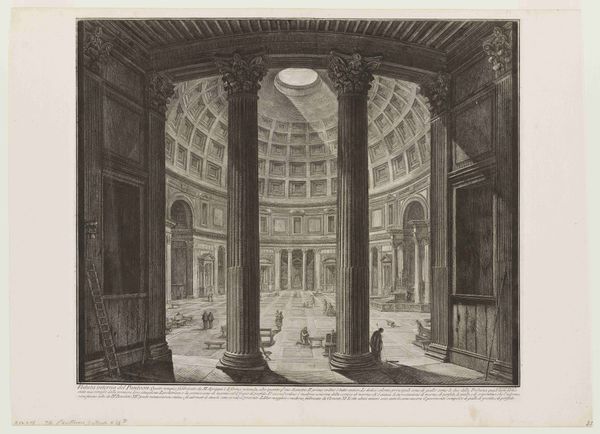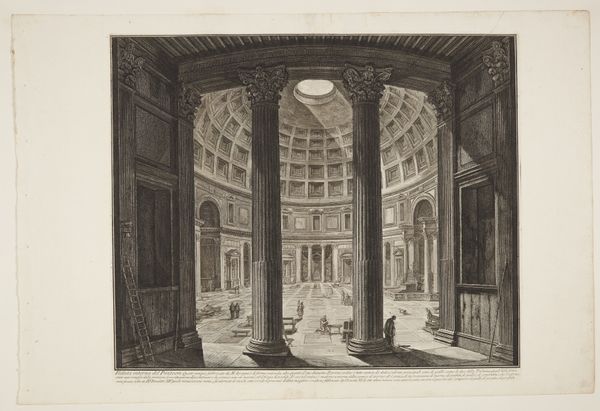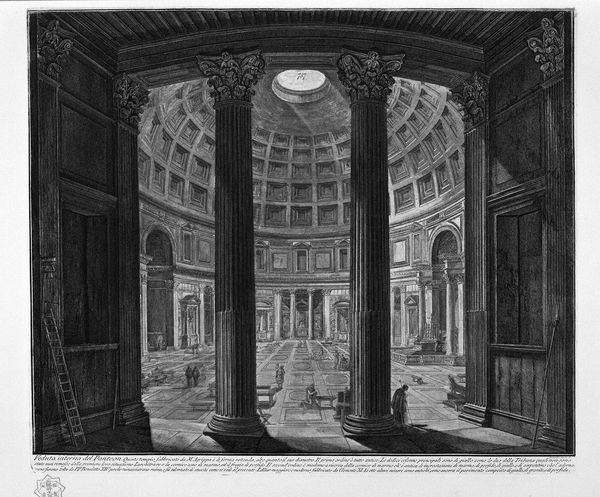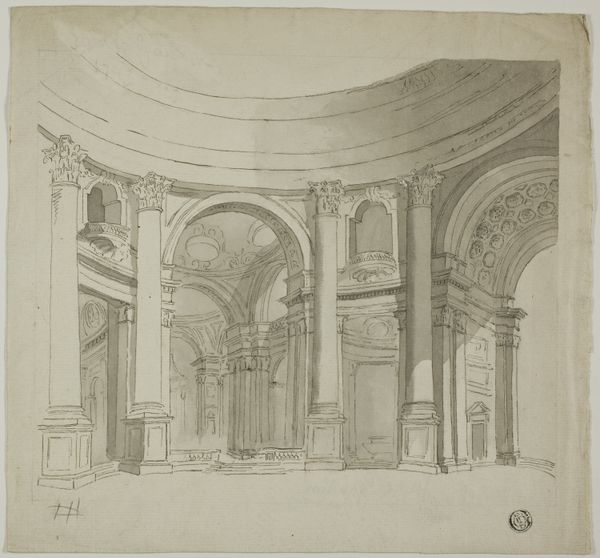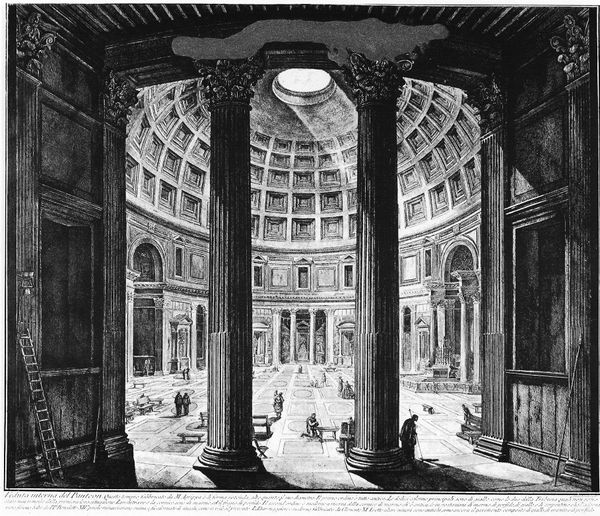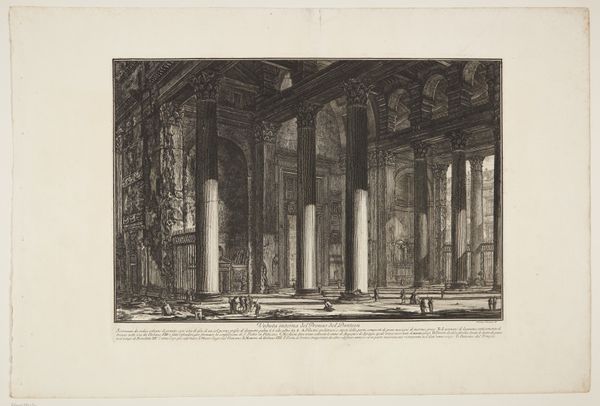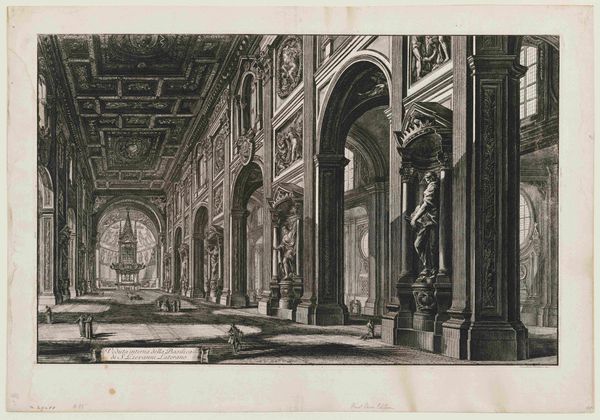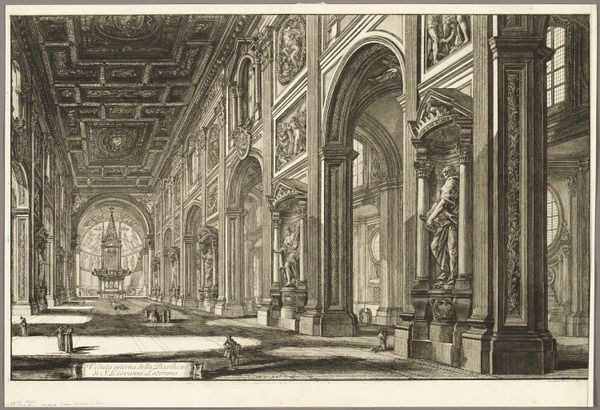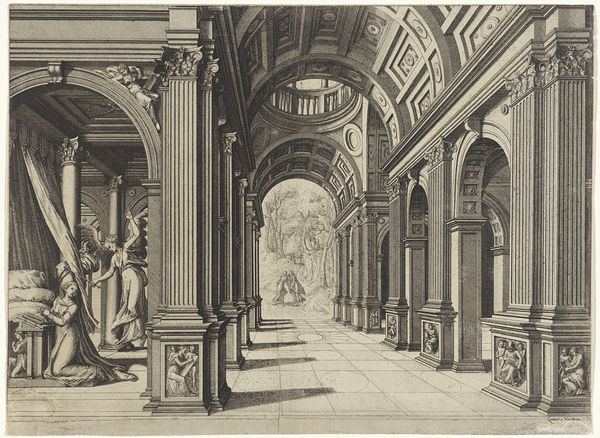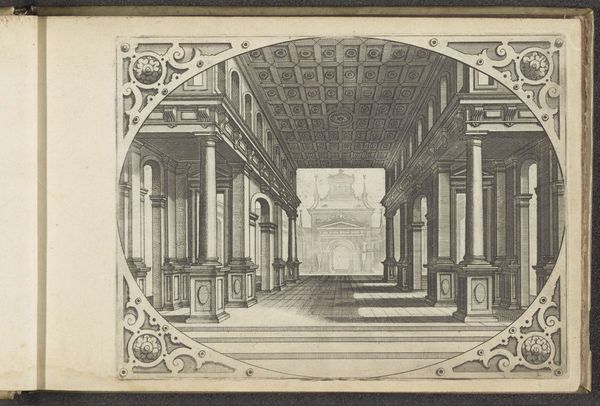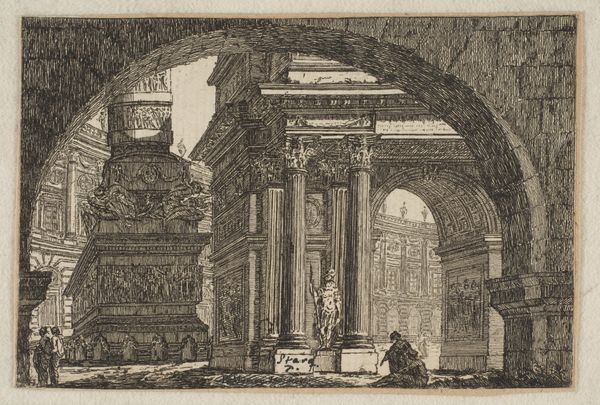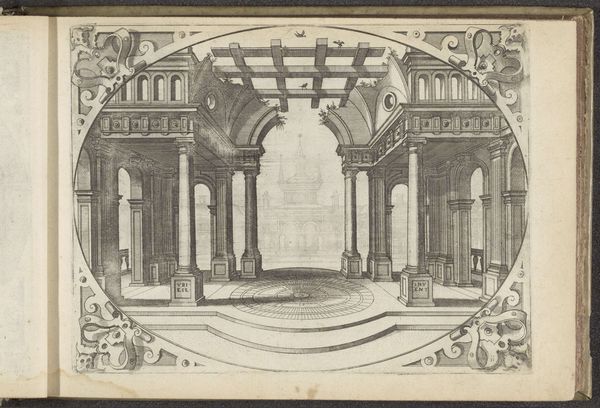
etching, engraving, architecture
#
neoclacissism
#
etching
#
old engraving style
#
perspective
#
geometric
#
line
#
history-painting
#
engraving
#
architecture
Dimensions: height 480 mm, width 560 mm
Copyright: Rijks Museum: Open Domain
Giovanni Battista Piranesi made this etching, Interieur van het Pantheon te Rome, using metal plates, acid, and ink. The image shows the interior of the Pantheon in Rome, with its massive columns and coffered dome. What I find particularly fascinating about this work is the way Piranesi used the etching process to capture the scale and grandeur of the building. He would have painstakingly drawn the image onto a metal plate, then used acid to bite away the lines, creating a network of grooves that would hold ink. The quality of the printed line, whether bold or fine, depended entirely on the amount of labor Piranesi invested. The print medium allowed Piranesi to disseminate his vision of Rome to a wide audience, catering to the growing demand for images of classical architecture. As a result, the print wasn’t only a representation of architecture, but also a commodity, mass-produced and distributed as part of a burgeoning tourist industry. By understanding the materials and processes involved, we gain insight into the work's historical context.
Comments
No comments
Be the first to comment and join the conversation on the ultimate creative platform.
